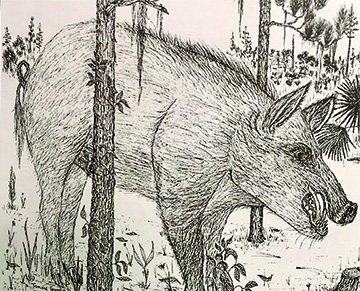Mickey Starling
reporter3@greenepublishing.com
Pánfilo de Narváez was a Spanish soldier and explorer who made his way to the shores of Florida after conquering Cuba and Jamaica. Narvaez and his 400 men were in search of Mexico. After landing at Tampa Bay in April of 1528, he marched northward through very difficult terrain until he reached the Apalachee River on June 24.
Narváez was the first white visitor to Florida who made his way through what would become Madison County. Some of the Native Americans he met along the way spoke of gold, which surely inspired his explorations, though he and his men were often tired and hungry. Narváez died within a year of setting foot on Florida soil. The only four survivors of his expedition finally reached Mexico City in 1536, after having been given up for dead by the Spanish government.
Though hogs have roamed the earth for thousands of years, they made their way to Madison County as courtesy of Narváez and his men. The hogs were to provide fresh meat for the explorers as they made their tiring trip through the vast area. Hogs were normally herded along the way, but they were known for slipping out on their own to search out the rich woodlands and swamps that were in abundance. The hogs soon reproduced in the wild, giving Florida the nuisance beast that we have all come to love today. The Pineywood Rooters that presently roam our woods are the distant relatives of the Spanish hogs.
Much of the information for this article was taken from Tommy Greene's book, "Madison County: From the Beginning." The book is available for purchase at Greene Publishing, Inc., in Madison.

